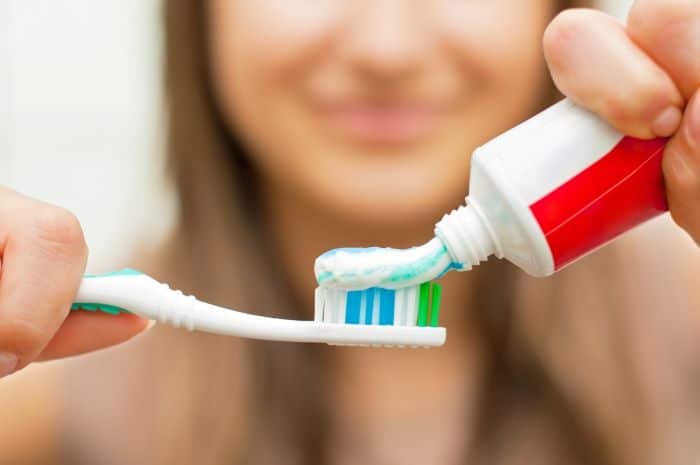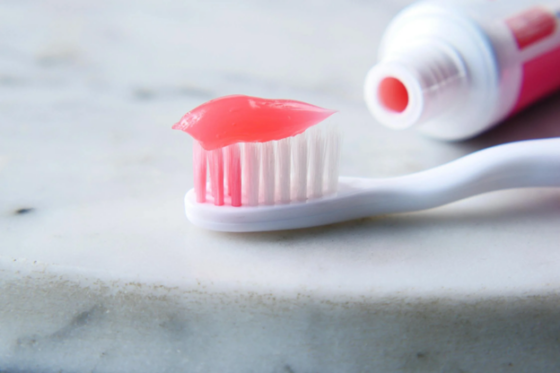
If you’ve been following any political news, you’ve probably heard Robert F. Kennedy’s take on fluoride. He’s likely our next Secretary of Health and Human Development but doesn’t like community water fluoridation. He has questioned its safety and ethics, citing potential health risks, including neurological and developmental effects, based on emerging scientific studies.
However, health professionals almost unanimously disagree. The CDC calls fluoridation of drinking water “one of the 20th century’s greatest public health achievements,” and the American Dental Association cites it as the “single most effective public health measure to prevent tooth decay.”
So, what’s the average parent supposed to think? Today, we will discuss critical scientific studies about this often-misunderstood mineral so you can have the facts on fluoride and decide whether to use fluoridated dental products.
What Is Fluoride?
Before we proceed, let’s examine fluoride. Fluoride is a naturally occurring mineral often found in soil, water, and various foods. It is a negatively charged ion of the element fluorine (F) and is commonly recognized for its role in dental health.
Fluoride strengthens tooth enamel, making it more resistant to decay. It also helps remineralize teeth by replenishing minerals lost from enamel due to acid attack. Fluoride is found in several forms, including sodium fluoride, calcium fluoride, and hydrofluorosilicic acid.
The Pros of Fluoride
Fluoride use has many beneficial impacts on teeth — while preventing cavities is one of the most important, it also has other dental health benefits!

Prevention of Cavities
In the United States, only 45% of adults have seen a dentist in the past year; it’s recommended to go every six months. And 55% of American adults have at least one chronic dental condition. Fluoride helps to remineralize and fortify tooth enamel, making it more resistant to acid and bacteria.
Extensive studies show fluoride significantly reduces the incidence of cavities, especially in kids, and continuous exposure to water and toothpaste helps protect teeth for a lifetime.
Helps Rebuild Early Tooth Decay
Fluoride can reverse the early stages of tooth decay. Fluoride rebuilds enamel and can stop the progression of cavities when they’re in the precarious stage. This stage appears as a weak patch on the enamel that is identified during dental X-rays.
Dentists usually prescribe short-term toothpaste with extra fluoride and use a fluoride gel on teeth in the office to help prevent these spots from developing further. This reduces the need for fillings, crowns, root canals, and other painful and expensive restorative procedures.
Reduces Plaque and Bacterial Growth
Fluoride prevents more than cavities. It reduces the growth of bacteria that cause cavities and gum disease, lessening the risk of gingivitis and periodontal disease. It also helps balance the oral microbiome.
Everybody’s mouth naturally contains bacteria. Some of these bacteria are beneficial and help with digestion and overall health; others cause disease. Fluoride helps keep the harmful bacteria in check, keeping you and your mouth healthy.
Easy, Effective, and Accessible
Water fluoridation is highly cost-effective and population-effective. It reduces tooth decay across entire populations and has global endorsement. Health organizations, including the WHO and CDC, note that water fluoridation is safe and effective.
And when it’s readily available through public water supplies, it’s accessible even for people who might not have regular dental services – like the 1.7 million Americans who don’t live within a 30-minute drive of a dental clinic.
Cons of Fluoride Usage
While fluoride has many benefits, it can also be controversial. Here are some of the concerns people have about fluoride.
Risk of Overexposure (Dental Fluorosis)
This is the single most significant risk of fluoride in the US.
This is called dental fluorosis, which leaves streaky white patches on the permanent teeth. This discoloration doesn’t affect dental health but can lead to other problems, like self-esteem. It most commonly occurs when kids under three are given fluoride supplements and fluoridated drinking water.
Potential Health Risks with High Exposure
Some research suggests there may be health risks associated with high fluoride exposure. Still, most studies involve participants exposed to a much higher fluoride than in the US. Determining how much fluoride is in your water is essential before deciding whether to use fluoridated products.
Some studies suggest that excessive fluoride exposure in children can interfere with thyroid function and impact their growth hormones. Skeletal fluorosis is also a risk, but reaching a level of fluoride exposure where fluorosis can happen is extremely rare in the United States. It’s much more common in areas of Africa and Asia where fluoride is more prevalent in the groundwater.
Additionally, one major study claims high fluoride levels cause lower IQs in children. However, the amount of fluoride in this study was more than twice the level recommended by any health authority.
Ethical and Social Concerns
This is one of the most significant issues many people have with water fluoridation. Living in an area with fluoridated water exposes you to fluoride regardless of your health status or desires.
While some argue this is an essential public health measure in a country where nearly 70 million adults don’t have dental insurance and 90% of adults have had at least one cavity, others take the position that it should be like other health decisions: a personal choice that you make for yourself.
Another social concern is disproportionate impact; critics of fluoridation often say that public health policies don’t appropriately consider what communities might have higher levels of naturally occurring fluoride. Environmental concerns exist, especially in areas where industrial fluoride waste is released. Fluoride isn’t just used in public health and manufacturing; it can leach into soil and water from waste facilities. This can impact wildlife and plant life. And like mercury, fluoride often builds up in aquatic organisms’ tissues, significantly disrupting local ecosystems.
Potential for Misuse
Misuse of fluoride is another essential health concern. While fluoridated toothpastes and mouthwashes are safe when used as directed, accidental misuse can lead to acute fluoride toxicity. This includes symptoms like nausea and vomiting, which most commonly occur when children are learning to brush their teeth. It’s vital that kids under three use child-friendly toothpaste and that parents supervise their little ones while they’re learning how to brush.
Sometimes, natural fluoride levels exceed safe limits, potentially harming local populations. If you’re traveling overseas, especially in China and India, it doesn’t hurt to drink filtered water to avoid more fluoride than your body can handle.
Current Scientific Debate and Regulation
Community water fluoridation began in 1945 when Grand Rapids, Michigan, introduced it to its water supply. Within ten years, cavity rates had dropped by 60%. Around 25 countries, including the United States, fluoridate their water. While fluoridated water is less common in Europe, European countries instead fluoridate their table salt and milk or have free dental programs for fluoridation.
Countries with high fluoride levels naturally present in their water, like Italy, also don’t fluoridate their water – they don’t need to.
However, there is ongoing research into the long-term health effects of fluoride, particularly concerning its neurotoxic potential. Some studies show overusing fluoride can have adverse impact on fetal brain development. About 3 million Americans live in areas with a natural concentration of fluoride over 0.7 ppm, and one major study has found that fluoride over 1.5 ppm can have damaging effects. So, if you have that much fluoride in your water, you may want to consider avoiding fluoridated dental products, especially if you’re pregnant.
Alternatives to Fluoride
So, if you want to avoid fluoride, what should you use? There are lots of fluoride-free dental options that have measurable benefits. One of the most promising is xylitol mouthwash and toothpaste. Xylitol, also known as birch sugar, is toxic to the bacteria that cause cavities. It doesn’t break down like typical sugar, so it doesn’t change your saliva’s pH and prevents bacteria from sticking to your teeth. However, it is toxic to dogs – so keep it away from family pets!
Hydroxyapatite toothpaste is another promising alternative. Hydroxyapatite is the mineral that makes up tooth enamel and dentin, and toothpaste is being studied as a potential fluoride-free anti-cavity solution. While there are limited options, hydroxyapatite toothpaste is a relatively new dental innovation – we will probably see more of it in the coming years.
You have a few filtration options to remove fluoride from your water. Reverse osmosis, or RO, is highly effective. RO systems can pull fluoride from your water, so if you live in an area with more than 0.7 ppm of fluoride, you may want to invest in one of these systems. Activated alumina filters are even more effective against fluoride, although these filters are not as standard as RO systems. Activated alumina can reduce fluoride levels from as high as 10 ppm to under one ppm.
Should You Use Fluoride?
The bottom line is that fluoride levels depend highly on where you live. Fluoride is safe when used according to recommendations; it becomes problematic when the levels are too high.
You can also get your water tested or test it yourself with an at-home test.
As parents and stepparents, we have many decisions about our kids’ health, including their dental health. It’s important to consider not just the benefits but also the risks of anything that affects health.
- Do you use fluoridated products?
- Do you know what’s in your drinking water?
- How do you talk to your family about things like fluoride?
Let us know in the comments! The community would love to hear from you. Check out our Health articles for more information on prioritizing your family’s wellness!





